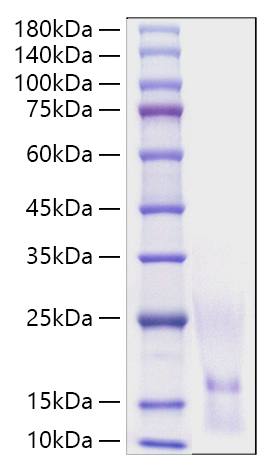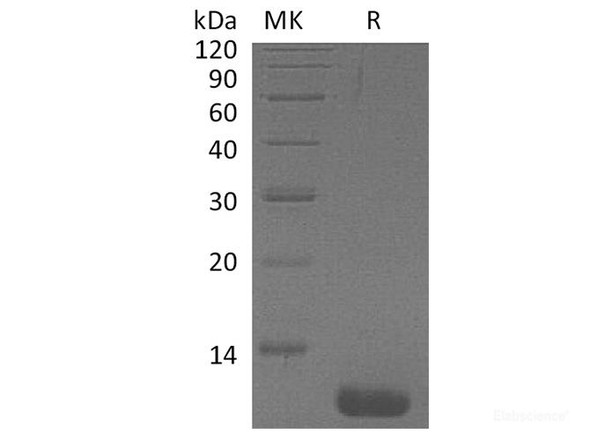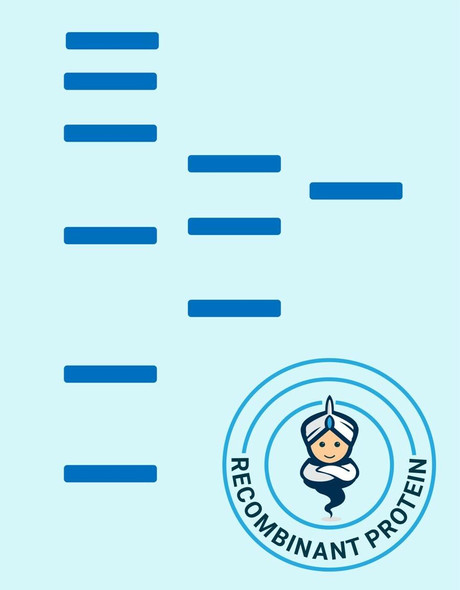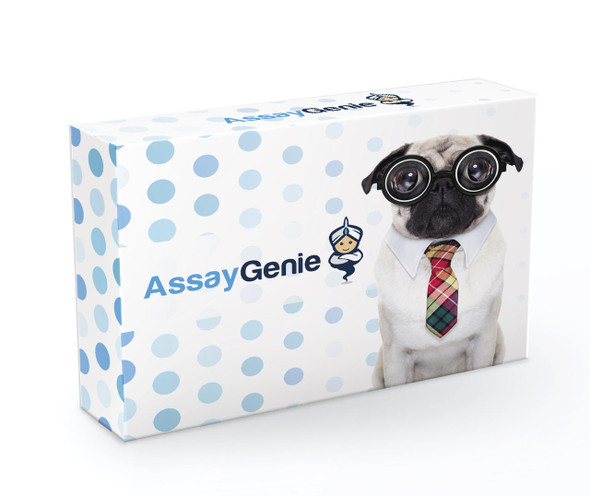Description
| Product Name: | Recombinant Human CCL1/I-309 Protein |
| SKU: | RPCB1021 |
| Size: | 10µg |
| Tag: | No tag |
| Reactivity: | Human |
| Expression Host: | Pichia |
| Protein Description: | High quality, high purity and low endotoxin recombinant Recombinant Human CCL1/I-309 Protein , tested reactivity inPichiaand has been validated in SDS-PAGE.100% guaranteed. |
| Endotoxin: | <0.1EU/μg |
| Purity: | > 95% by SDS-PAGE. |
| Formulation: | Lyophilized from a 0.22 μm filtered solution of PBS, pH 7.4. |
| Gene ID: | 6346 |
CCL1 or chemokine (C-C motif) ligand 1, also known as I-309 or TCA-3, is a member of the chemokine (C-C motif) ligand family. The C-C chemokines have two cysteines nearby the amino terminus. There have been at least 27 distinct members of this subgroup reported for mammals, called C-C chemokine ligands (CCL)-1 to 28. I-309/CCL1/TCA-3 interacts with the G protein-linked transmembrane chemokine receptors CCR8 and induces biochemical events that may result in the control of chemotaxis, proliferation, apoptosis and adhesion. It has been demonstrated that I-309/CCL1/TCA-3 displays chemotactic activity for monocytes and other cell types such as NK cells and dendritic cells, but not for neutrophils. Furthermore, as the only known physiological ligand for CCR8, I-309/CCL1/TCA-3 was identified as a potent inhibitor of HIV-1 envelope-mediated cell-cell fusion and virus infection. I-309/CCL1/TCA-3 induces significant levels of LTC4 from elicited eosinophils.
| Storage: | Store at -20℃.Store the lyophilized protein at -20℃ to -80 ℃ up to 1 year from the date of receipt.After reconstitution, the protein solution is stable at -20℃ for 3 months, at 2-8℃ for up to 1 week. |
| Reconstitution: | Centrifuge the vial before opening. Reconstitute to a concentration of 0.1-0.5 mg/mL in sterile distilled water. Avoid vortex or vigorously pipetting the protein. For long term storage, it is recommended to add a carrier protein or stablizer (e.g. 0.1% BSA, 5% HSA, 10% FBS or 5% Trehalose), and aliquot the reconstituted protein solution to minimize free-thaw cycles. |
| Swiss-Prot: | P22362 |







